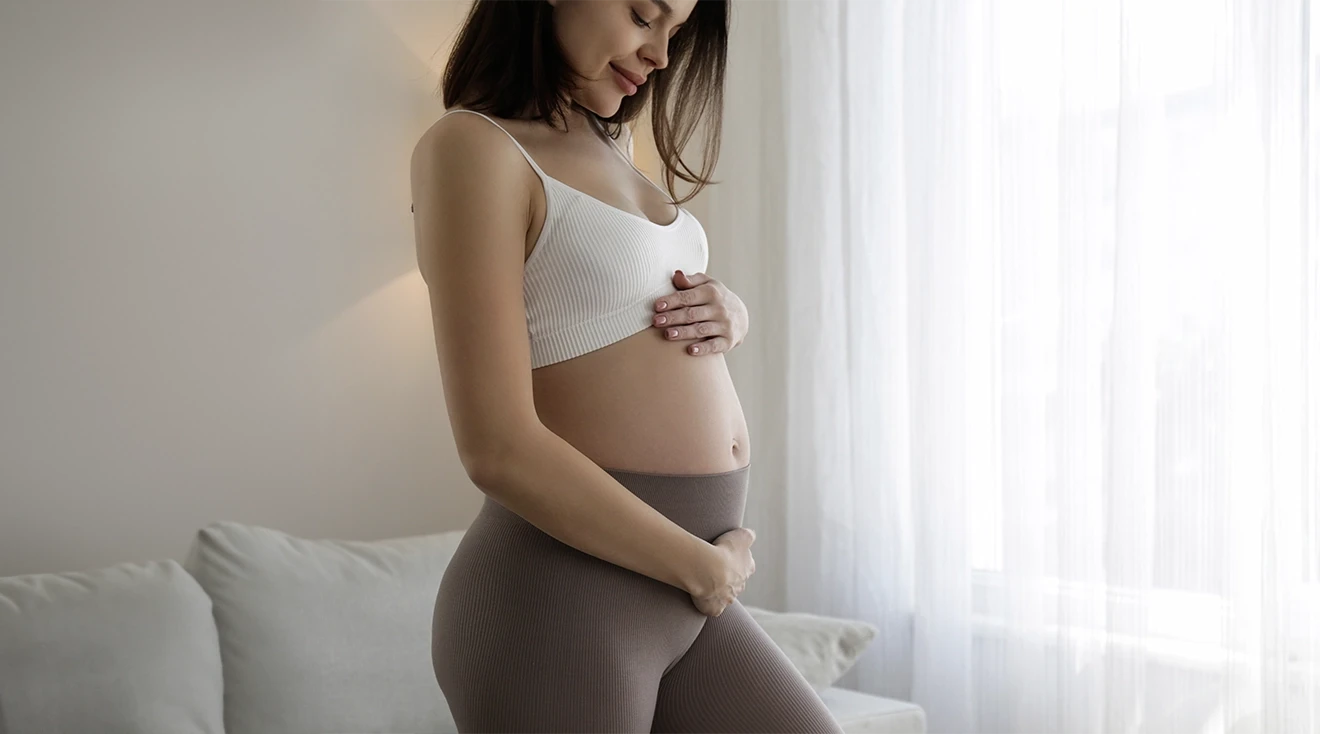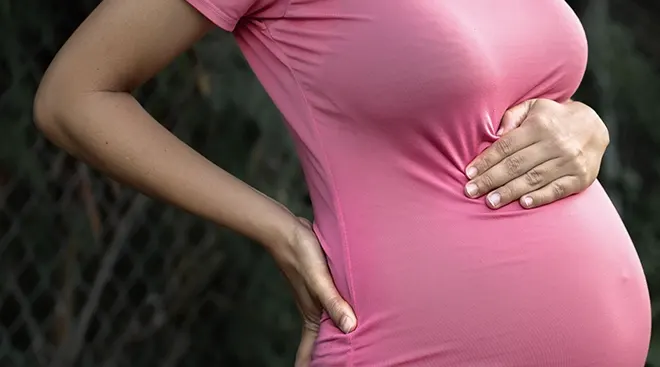When Do You Start Showing in Pregnancy?
Getting a positive pregnancy test can be incredibly exciting—but there are a lot of questions that come in the weeks and months that follow. At some point during your first trimester, for example, you might start wondering: When do you start showing in pregnancy? It can be an anxiety-inducing question, especially if it’s your first baby. It’s important to keep in mind that the timeline for when you start showing in pregnancy is different for everyone, and there’s a wide range that’s considered normal. Still, you may be eager to see that adorable bump pop—or perhaps you’re hoping to hide the big news for a little longer. Read on to learn what you can generally expect.
When does a baby bump show? The answer is complicated. “It can vary a lot from person to person,” says Alexander Lin, MD, an ob-gyn and medical director of women’s health at Northwestern Medicine Palos Hospital in the Chicago area. Factors like your body shape, weight and whether it’s your first pregnancy play a role in how soon you start showing during pregnancy, he adds.
In general, doctors say you can typically expect to start showing in pregnancy anywhere between late in the first trimester and midway into the second trimester—from around 12 to 20 weeks. “But there’s a wide variation, and everyone is different,” says Jennifer Wider, MD, a nationally renowned women’s health expert, author and radio host. “Some women show earlier and others later.”
This varies for everyone, but some pregnant people start showing a little sooner in their second pregnancy. “With a [subsequent] pregnancy, the abdominal muscles have a little more laxity, or can stretch more easily,” says Alexa Sassin, MD, an assistant professor in the Department of Obstetrics and Gynecology at Baylor College of Medicine in Houston. “For this reason, the uterus may be able to move up and out of the pelvis earlier in pregnancy.”
Got two or more bundles of joy in there? You’ll likely start to show sooner in pregnancy than people who are carrying one baby.
“[You] might start to show sooner than 12 weeks,” says Christine Greves, MD, FACOG, an ob-gyn at the Winnie Palmer Hospital for Women & Babies in Orlando. “Once the uterus is larger and out of the pelvis, you would show.” If you’re having multiples for the second time, you can also expect to show sooner. “Two twin pregnancies back-to-back will definitely show earlier than a single pregnancy,” Wider says.
Again, every pregnant body is different. But experts say there are a few different factors that can influence how and when you start showing in pregnancy.
- The angle of your uterus. A pregnant person with a uterus that points forward, or an anteverted uterus, might start showing earlier than one with a uterus that points or tilts backward, aka a retroverted uterus, according to Sassin.
- Whether you have diastasis recti. “If you have diastasis recti, when the gap in the abdominals doesn’t close as much as it should after pregnancy, you may also start showing earlier,” Sassin says.
- Your individual body shape. The size and shape of your body may play a role in when you start to show during pregnancy. “There is some anecdotal evidence that your height—shorter women may show earlier—and the length of your torso can play a role,” Wider says.
- Other uterine conditions. People who have uterine fibroids, which can cause the uterus to enlarge, will typically show sooner, says Lin.
- Prior pregnancies. If it’s not your first rodeo, you’re likely to show sooner, Wider says.
While no two pregnant bumps are created equal, you can generally expect your pregnancy bump progression to follow this pattern:
- First trimester (weeks 1 to 13): Your stomach may look and feel a little more puffy than usual, but you may not have an obvious bump at this point. By the end of the first trimester, you might start to notice your pants fitting differently, says Lin.
- Second trimester (weeks 14 to 27): Midway through your second trimester, you’ll likely have a more obvious bump. “Around 20 weeks, we expect the top of the uterus—the fundus—to be at the level of the belly button, which can cause the appearance of the classical bump,” says Sassin.
- Third trimester (weeks 28 to 40): Baby grows quickly during this time, and your bump will typically grow along with them.
If you’re not showing as expected during pregnancy, it’s understandable to feel worried. While doctors say it’s usually not a cause for concern—it can simply be due to any of the factors we mentioned above—it doesn’t hurt to mention your concerns to your provider at your next visit.
If it’s earlier in your pregnancy, Greves suggests asking your provider to measure your bump. “Each visit that you go after 20 weeks, we measure anyway,” she says. “If the measurements are off, we may perform an ultrasound to assess for growth.”
Just know this: If your doctor isn’t worried, you shouldn’t be either. “It’s best to give yourself grace and recognize that just because your friend or family member looked a certain way in pregnancy doesn’t mean you will,” says Greves. Try not to compare, and enjoy your unique experience.
Expert sources:
Christine Greves, MD, FACOG, is an ob-gyn at the Winnie Palmer Hospital for Women & Babies in Orlando. She received her medical degree from the University of South Florida College of Medicine.
Alexander Lin, MD, is an ob-gyn and medical director of women’s health at Northwestern Medicine Palos Hospital in the Chicago area. He received his medical degree from the University of Michigan Medical School.
Please note: The Bump and the materials and information it contains are not intended to, and do not constitute, medical or other health advice or diagnosis and should not be used as such. You should always consult with a qualified physician or health professional about your specific circumstances.
Plus, more from The Bump:
Alexa Sassin, MD, is an assistant professor in the Department of Obstetrics and Gynecology at Baylor College of Medicine in Houston, where she also received her medical degree.
Jennifer Wider, MD, is a nationally renowned women’s health expert, author and radio host. She received her medical degree from the Mount Sinai School of Medicine in New York City.
Mayo Clinic, Uterine Fibroid, September 2023
Learn how we ensure the accuracy of our content through our editorial and medical review process.
Navigate forward to interact with the calendar and select a date. Press the question mark key to get the keyboard shortcuts for changing dates.




















































